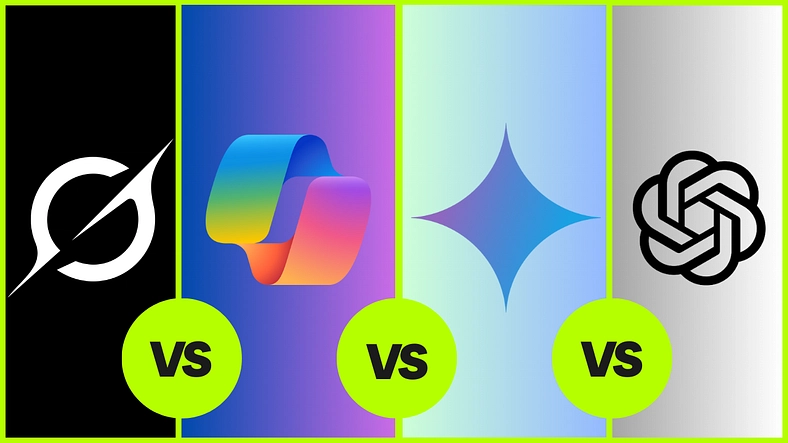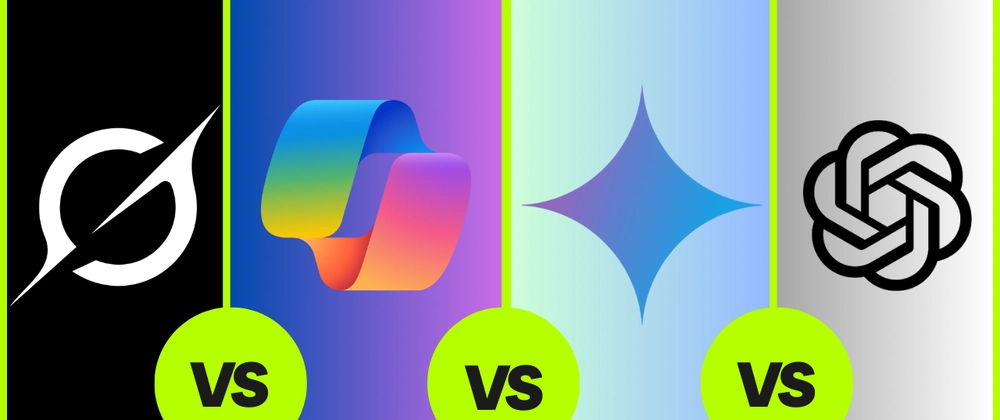I Tested 4 Leading LLMs for Travel Planning — Here’s Who Gave the Best Answers (and Who Missed the Mark)”
These days, choosing a travel assistant is more about selecting the appropriate AI or, more precisely, the correct LLM (Large Language Model)than it is about Googling. That meant I tested four top candidates: ChatGPT, Copilot, Gemini, and Grok. I questioned them the identical four real-world travel questions and evaluated their responses for utility, vibe, personality, and visuals.
1. Top Tokyo Stay for Remote Workers Who Enjoy Cafes
Prompt: “If I work remotely and enjoy cafes, what’s the ideal area to stay in Tokyo?”
Grok’s Opinion:
Grok provided a fair list of remote-work-friendly Tokyo districts Shibuya, Nakameguro, Kichijōji, and Kōenji, each with a good vibe, cafe, connectivity, and ambiance analysis.
What was useful:
- Grok underlined Nakameguro for cherry blossoms and relaxed cafés, while Koenji for indie flair and low-cost travel.
- Practical advice includes co-working ideas and closeness to JR Chuo Line.
What lacked:
- No visual help or particular cafe names.
- A little too safe it read like a Lonely Planet blurb, not a local’s instruction sheet.

Gemini’s Take:
Stylish design and great detail showed Gemini’s great flexibility. It emphasized Shibuya, Shinjuku, Daikanyama, and Nakameguro, with mentions such as The Millennials, Cafe Caffice, and Tsutaya Daikanyama.
What worked well:
- Actual cafe names and their feel worked wonderfully.
- Mentioned crowd sizes and Wi-Fi dependability.
- Clean visual hierarchy and clear advantages/disadvantages.


ChatGPT’s Opinion:
With depth, color, and character, ChatGPT got it. It added five neighbor hoods including Shimokitazawa, Koenji, and Kichijōji and tossed in phrases like “Brooklyn-meets-Bosphorus” (sure, we’re paying attention).
What was effective:
- Gave you a vibe check before you booked: artistic? laid-back? walkable
- Bonus: Recommended looking up “ノマド” (digital nomad) and apps like Tabelog. Clever.
Where to go better:
- Slightly less organized than Gemini but far more relatable.
✴️ Copilot’s Take:
Copilot kept it short, mentioning only a few names like Bar & Cafe Camellia and Oriental Lounge.
What was effective:
- Visual map! This is a great UX benefit. You immediately know where these locations are.
- Great for those seeking elegance (Marunouchi) or innovative co-working environments.
Where it fell short:
- Little investigation into local vibes.
- No casual choices mentioned as Koenji or Shimokitazawa.

🔍 Verdict for Q1:

Best Overall Experience: ChatGPT mixes aesthetics, advise, and authenticity.
Most Visual Clarity: Copilot, because to its integrated map.
Hidden Gem Factor: Grok for Koenji naming.
2. Can You Stop Somewhere Beautiful on a Florence to Nice Train Trip?
Prompt: “Can I take a train from Florence to Nice and stop somewhere beautiful along the way?”
Grok’s Take:
Grok even included train platform information and ticket tips, guiding you through Cinque Terre, Genoa, Monaco, and Menton with a picturesque, route-based explanation.
What worked well:
- Smart itinerary: Florence → La Spezia → Cinque Terre → Genoa → Ventimiglia → Nice.
- Mentioned choices to see Menton/Monaco, thereby allowing the visitor some freedom.
Included real-time rail planning advice (Trainline/Omio).

Gemini’s Take:
Gemini was fast, clean, and visually impressive again. It suggested:
- Genoa (with mention of seafood and harbor vibes)
- Florence
- Nice
What worked well:
- Clear bullet-style with strong visuals.
- Balanced historical and scenic suggestions.
- Not too wordy.

ChatGPT’s Take:
ChatGPT took it up a notch — with routes + vibes + mini-itineraries.
From how long each segment would take to what to eat in Genoa (👋 pesto), it painted the most complete picture.
Where it wins:
- Suggested overnight stays.
- Added pros for each stop.
- Even covered ticket options and platforms like Thello or Trenitalia.
Copilot’s Take:
Copilot used Google Maps — which is awesome — but the response was mostly focused on driving instead of train routes.
What worked:
- Beautiful embedded map, visually useful.
- Mentioned Genoa, but missed other coastal gems.

🔍 Verdict for Q2:

Most Practical: ChatGPT — for breaking the whole trip down like a travel blogger.
Most Digestible: Gemini — neat bullets + minimal fluff.
Visual Hit: Copilot’s map is a great “at-a-glance” tool, even if it lacked depth.
3. Best Uncrowded Beach Destinations in Europe for May
Prompt: “I want beach weather in Europe in May, but not super crowded. Ideas?”
Grok’s Take:
Response Strength: ★★★☆☆
What it nailed:
- Grok gave a country-by-country list, including Portugal, Sardinia (Italy), Croatia, Spain, and Greece.
- Great weather breakdown: “22–26°C,” “shoulder season,” and even local travel hacks (e.g., renting scooters in Sardinia).
- It avoided cliché tourist traps like Santorini and Costa del Sol — bonus points.
Where it fell short:
- Reads more like a tourism board flyer than a personal guide.
- No local flavor or emotional hook — purely informative.

Gemini’s Take:
Response Strength: ★★★★☆
What stood out:
- Shortlisted six beautiful, quiet beaches including Zlatni Rat (Croatia), Durrës (Albania), Cala Boadella (Spain), and Scilla Beach (Italy).
- Ultra-compact and readable format — great for skim readers.
- Subtle travel tone: “pre-peak season,” “quiet retreat,” “secluded coves.”
What could’ve been better:
- No weather data or transportation details.
- Slightly lacks local recommendations or where to stay.

ChatGPT’s Take:
Response Strength: ★★★★★
What it nailed:
- It wasn’t a list — it was a moodboard with travel tips.
- Gave vibes, not just facts: “Lazy southern charm,” “Santorini-level views without the crush.”
- Introduced hidden gems like Korčula (Croatia) and Southern Crete, plus callouts for weather, food, and even wine.
Where it dominated:
- Detailed reasons why May works for each place.
- Useful extras like boutique hotel hints, crowd info, even local foods.
Where it could improve:
- Just one table or map would’ve sealed the deal.


Copilot’s Take:
Response Strength: ★★★☆☆
What stood out:
- Gave some solid beach picks like Spiaggia di Piscinas, Scilla, and Cala Boadella.
- Included brief but punchy descriptors like “quiet retreat,” “towering dunes,” and “crystal-clear water.”
Where it lacked:
- Didn’t explain why these beaches are good in May specifically (weather? crowd levels?).
- Slightly too short to be helpful for decision-making.

🔍 Verdict for Q3:

Most Inspirational: ChatGPT, no question. Reads like a friend who’s lived everywhere.
Best Quick Guide: Gemini — bite-sized, visual, easy to digest.
Travel Nerd Favorite: Grok for data and off-season wisdom.
Straightforward & Simple: Copilot is great if you’re in a rush to shortlist.
4. Best Vegetarian and Gluten-Free Food Spots in Istanbul
Prompt: “I’m vegetarian and gluten-free — can you recommend food spots in Istanbul?”
Grok’s Take:
Response Strength: ★★★☆☆
What it nailed:
- Grok provides a well-rounded list of restaurants, including local favorites like Vegan Dükkan Lokanta and Vegan Food Cartel.
- It includes a variety of spots across the city, appealing to a wide range of tastes and preferences.
- It touches on a great mix of dining options, from casual cafes to slightly more refined options.
Where it fell short:
- Feels a bit generic and not as tailored to the unique needs of gluten-free and vegetarian diets in Istanbul.
- Could use more detail on the food experience, local specialties, and insider tips for navigating Turkish menus.

✴️ Gemini’s Take:
Response Strength: ★★★★☆
What stood out:
- The response focuses on specific places and provides clear, helpful links, including a map for easy navigation.
- It highlights unique gems like Vegan Dükkan Lokanta (Kadıköy) and Rolla GlutenFree (Beşiktaş), making it easy to find reliable, vegetarian-friendly spots.
- Great use of visual maps and specific addresses, making it practical for readers to find these places.
What could’ve been better:
- Still lacks detailed food descriptions or why each place is special for someone with dietary restrictions.
- More information on local Turkish vegan/gluten-free specialties could add value.

✴️ ChatGPT’s Take:
Response Strength: ★★★★★
What it nailed:
- ChatGPT stands out by combining both vegetarian and gluten-free needs with a focus on local Turkish cuisine.
- It goes beyond just listing places, diving into details like menemen, falafel, and other traditional options, explaining why they are perfect for gluten-free or vegetarian diets.
- It includes helpful language tips like “Ben vejetaryenim” (I’m vegetarian), offering extra convenience for travelers.
Where it dominated:
- The response combines local cultural context with dietary advice, making it a more personalized, travel-friendly guide.
- ChatGPT provides a well-rounded, holistic view, incorporating cultural food details and language hints, which enhances the experience for travelers.
- It also helps with dietary-specific insights, such as where to find gluten-free baklava.
Where it could improve:
- Adding more context on the local food culture or further highlighting the best places in each neighborhood could elevate the experience even more.
✴️ Copilot’s Take:
Response Strength: ★★★☆☆
What stood out:
- Copilot provides a basic yet useful list of reliable places like Vegan Dükkan Lokanta and Dukkan Galata.
- It includes simple and clear options without overloading the reader.
Where it lacked:
- The response is quite brief and doesn’t offer much beyond just listing the restaurants.
- No added details like specific food recommendations or cultural context were included, making it feel more functional than engaging.

🔍 Verdict for Q4:
LLM | Vegetarian and Gluten-Free Focus | Cultural Insights | Usability | Extras

🌱 Most Helpful for Foodies: ChatGPT — It dives into cultural context and local specialties for a more authentic guide.
🍴 Best Quick Go-To List: Gemini — Short, to-the-point, practical guide for those looking for places fast.
🧑🍳 Best Basic Option: Copilot — Provides a simple, no-frills list, though lacks deeper context.
7. Final Comparison & Verdict — Who Crushed It, Who Crashed
Let’s wrap everything up into a final head-to-head reflection, organized by real-world usability.
🧭 Overall Performance by LLM

🏆 Category Winners

🚨 The Real Verdict:
If you’re looking for a travel companion that thinks, GPT-4 is still ahead. It reasons, it plans, it vibes with you. But it needs a visual layer to feel complete.
Gemini is close, and sometimes even better in how quickly it gives info — but lacks the personal flavor and emotional weight that GPT-4 brings.
Grok? Fun to talk to. But would you hand it your travel itinerary? Probably not.
And Copilot? Great for maps and bullet points. But too often, it felt like using Google with a different skin.
#


Top comments (0)